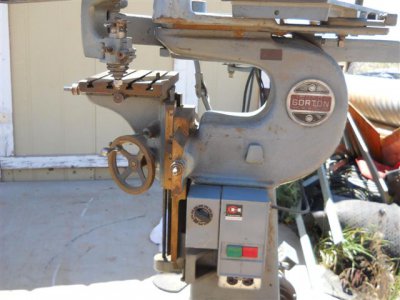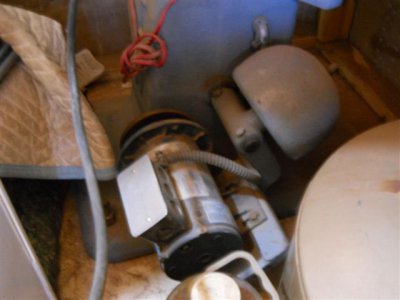I have two machine restorations going on that I'm unsure what route to take so I guess I'm trying to lean on the community for input, but unfortunately I think the questions have a little bit of the chicken and the egg quandary inherently built in, but what route should one take when breathing new life into beautiful old flat belt driven machines?: single phase AC motors that use belts and pulleys for limited clumsy speed control, gamble with the longevity of repurposing DC motors, or having to alter the budget and break the bank with a VFD/3 phase setup?
Maybe 2 or 3 years ago, there seemed to be this surge of people of re-purposing treadmilll motors to run all sorts of machines and apparatuses in the home shop. Some had seemingly done it with more success than others, with the primary reasons for the ones that weren't successful coming from all angles (with both the PWM and SCR drives themselves burning up...usually because of poor import quality components, these drives frying brushes and armatures and windings in the motors, etc, and then with the more successful systems failing because the motors aren't sealed so they're trying to cool themselves with abrasive chips and shop dust) so by the time all of these issues are sorted, you've invested the same as if having bought an import VFD and 3 phase AC motor, I think, anyway. What are people doing on here now with machines that they plan on keeping for themselves for quite a while? If running DC motors, what drive/motor combos are you using? If going with the 3 phase route, what motor/VFD combos there? It seems that powering these machines is harder than engineering their construction in the first place, ha...
Maybe 2 or 3 years ago, there seemed to be this surge of people of re-purposing treadmilll motors to run all sorts of machines and apparatuses in the home shop. Some had seemingly done it with more success than others, with the primary reasons for the ones that weren't successful coming from all angles (with both the PWM and SCR drives themselves burning up...usually because of poor import quality components, these drives frying brushes and armatures and windings in the motors, etc, and then with the more successful systems failing because the motors aren't sealed so they're trying to cool themselves with abrasive chips and shop dust) so by the time all of these issues are sorted, you've invested the same as if having bought an import VFD and 3 phase AC motor, I think, anyway. What are people doing on here now with machines that they plan on keeping for themselves for quite a while? If running DC motors, what drive/motor combos are you using? If going with the 3 phase route, what motor/VFD combos there? It seems that powering these machines is harder than engineering their construction in the first place, ha...





